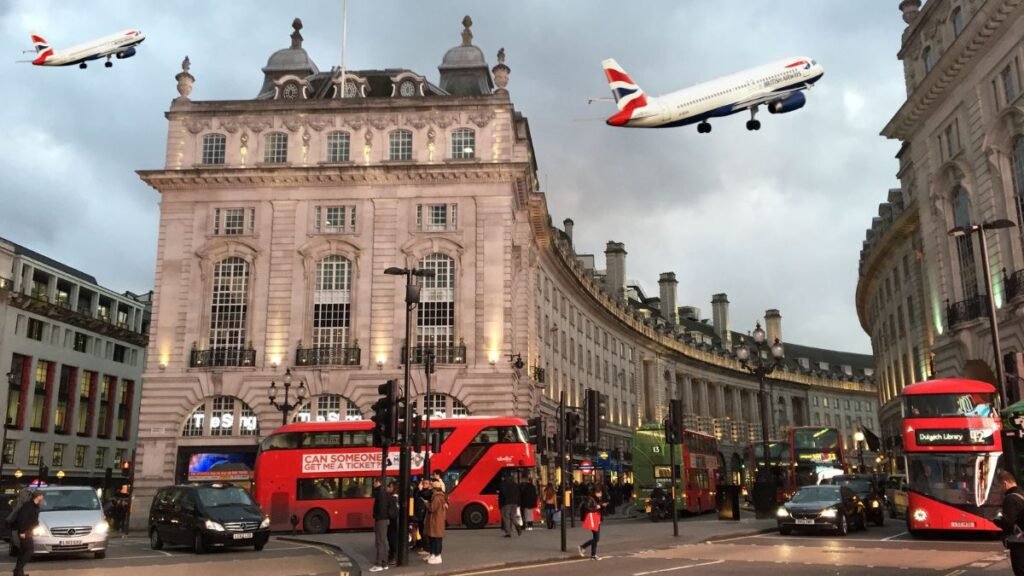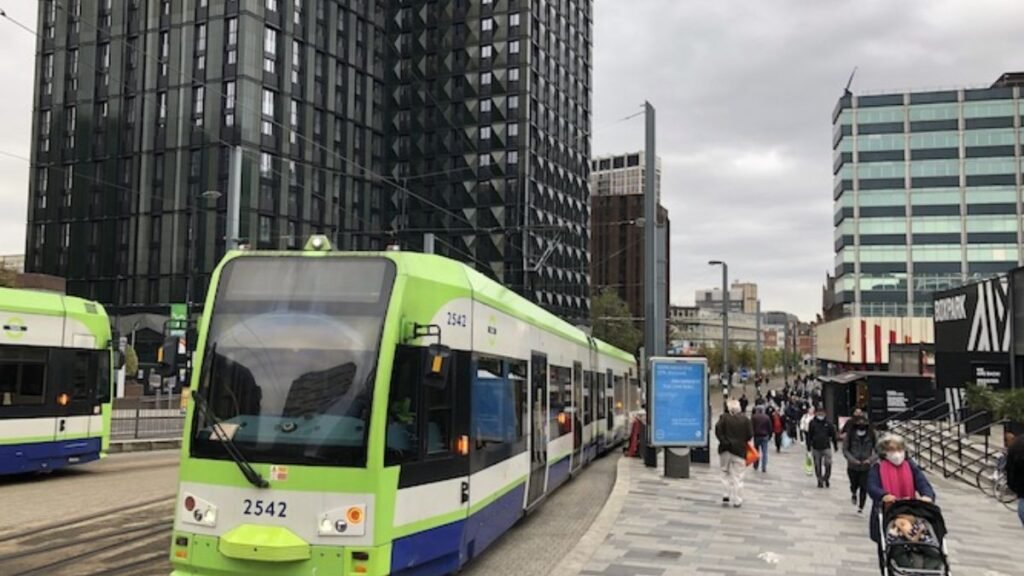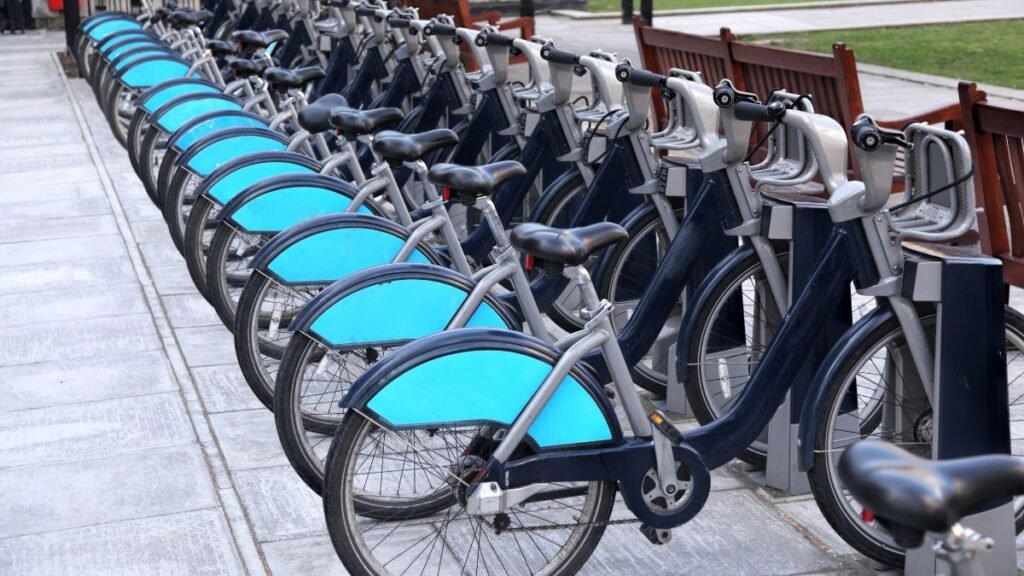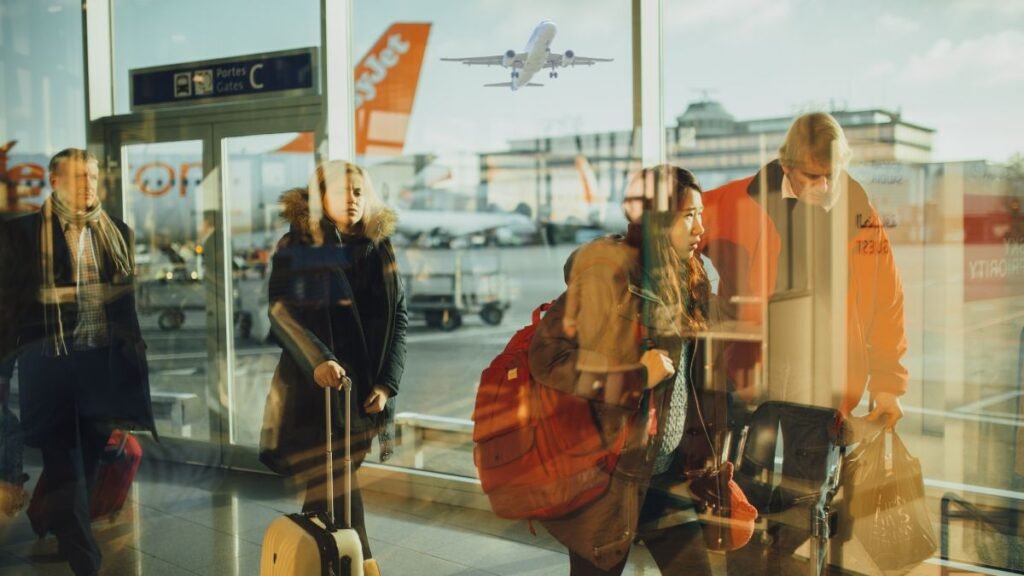Introduction
Ever wondered how to explore England’s vibrant cities through efficient transportation in England without breaking the bank? With its compact size and well-connected network, navigating between urban hubs can be seamless – if you know the tricks.

From speedy trains to budget-friendly coaches, there’s no shortage of ways to travel across the beautiful landscapes of England. The government’s £61bn investment in infrastructure ensures smoother journeys, but strategic planning is key.
Whether you prioritise speed, cost, or convenience, each option has its perks. For instance, trains can whisk you from one city to another in a matter of hours, offering a comfortable and quick alternative, while coaches provide a more economical choice, often with scenic routes that allow you to see the countryside. Additionally, it’s important to consider the time of day you plan to travel, as peak hours can affect both speed and cost, with tickets often being more expensive during busy periods.
Cycling routes and London’s unique transport systems add even more flexibility to your travel plans. The extensive network of bike lanes in cities encourages a healthy and eco-friendly way to explore. So, how do you choose the best way to hop between destinations? Let’s dive in, examining the benefits of each mode of transport, including tips on how to make the most of your journey, whether it’s planning ahead for the best fares or knowing where to find bike rental services in London.
Key Takeaways
- England’s compact size makes intercity travel efficient.
- Trains offer speed, while coaches are cost-effective.
- Cycling is a scenic alternative for shorter distances.
- London’s transport network requires separate planning.
- Government investments are improving infrastructure.
Introduction to Transportation in England
England’s transport system blends centuries-old charm with cutting-edge efficiency. Iconic red buses and Victorian railways share the network with contactless payments and electric vehicles. It’s a seamless mix of tradition and innovation.
Over 2.5 billion journeys are made annually on public transport, showcasing its popularity. Cities like Manchester and Birmingham boast frequent services, while rural areas may have limited options. Planning ahead ensures smoother travel.
Environmental efforts are transforming the network. London’s Ultra Low Emission Zone (ULEZ) expands in 2023, and cycling lanes multiply nationwide. For visitors, Oyster cards and contactless payments simplify rides across buses, trams, and trains.
1. Mastering Public Transport: Trains and Buses
Trains and buses form the backbone of intercity travel across the UK, a vital part of the public transport system. With 1.5 billion bus journeys annually and a rail network spanning 10,000 miles, smart choices save time and money. The extensive bus network connects urban and rural areas, making it accessible for everyone, while trains provide quick links between major cities, significantly reducing travel time.
Whether you’re hopping between cities or exploring locally, here’s how to navigate like a pro. Familiarize yourself with peak and off-peak travel times to take advantage of lower fares, and consider using travel passes for additional savings. Understanding the schedules and routes can greatly enhance your experience and efficiency when using public transport.
Navigating the National Rail Network
Plan routes via National Rail Enquiries for live updates. Major train stations like London King’s Cross or Manchester Piccadilly offer frequent services. Pro tip: Split ticketing – buying separate tickets for segments of your journey – can slash costs by 30%.
Using Local and Intercity Buses
Local buses accept contactless payments, while intercity coaches like National Express suit budget travellers. Rural routes may run less frequently, so check timetables ahead. Example: A London to Edinburgh coach costs £25 vs. £80 by train.
Essential Public Transport Apps
Download Citymapper for London, Birmingham, or Manchester to optimize your public transport experience. This app not only provides real-time updates on bus and train schedules but also offers alternative routes and estimated travel times, making it easier to navigate the city efficiently.
You can customize your preferences based on the mode of transport you prefer, whether it’s walking, cycling, or using public transport. Trainline compares prices and delays, helping you find the best deals on tickets while keeping you informed about any disruptions that may affect your journey. Additionally, it allows you to book tickets in advance, which can save you money and time, especially during peak travel periods.
UK Bus Checker covers 300,000 stops, ensuring you have access to comprehensive bus information across the country. Railcards (like the 16–25 card) cut fares by 1/3 – ideal for regular travellers. These cards can be a significant money-saver for students and young professionals who frequently use trains for commuting or leisure trips, making travel more affordable and accessible.
2. Understanding London-Specific Transport

London’s transport network is a world of its own, with unique quirks and systems that can be both fascinating and complex. Whether you’re darting through Tube tunnels or hailing a black cab, knowing the rules saves both time and cash. The Tube, for instance, is not just a means of getting from point A to B; it’s an integral part of London’s culture, offering a glimpse into the city’s history through its stations and artwork.
Additionally, understanding the various fare zones and ticketing options can significantly enhance your travel experience, allowing you to navigate the city efficiently. With various transport options available, from buses to river taxis, being informed helps you choose the best mode of transport for your journey, ensuring a smoother and more enjoyable experience.
The London Underground (Tube)
The Tube’s 11 zones span the city, with fares rising as you travel outward. Each zone has its own fare structure, making it essential for travelers to understand the zones they will be traversing to avoid unexpected costs.
Contactless payments cap daily costs, often beating Oyster cards for visitors, providing a more flexible and convenient way to pay. Additionally, contactless payments can be used on buses and trams, allowing for seamless travel across various modes of transport.
Pro tip: Avoid peak hours (7–9:30am, 4–7pm) to dodge crowds and higher prices, as fares can be higher during these busy times, and the experience can be less enjoyable due to the increased number of commuters.
Black Cabs and Ride-Hailing Apps
Traditional black cabs are exempt from the Congestion Charge, but apps like Gett offer fixed fares. For budget rides, compare Uber with local minicab services – sometimes cheaper for short hops.
Congestion Charge and ULEZ
Driving in central London? The congestion charge (£15/day) applies weekdays and weekends. Non-compliant vehicles also pay £12.50 daily for the ULEZ. Check your rental car’s compliance online to avoid fines.
- Night Tube: Runs Fridays and Saturdays on select lines.
- Walking: Often faster than driving in Zone 1.
- Example: Heathrow to City costs £12 by Tube vs. £45+ by car with charges.
3. Booking Coach Travel for Budget-Friendly Journeys
Budget-conscious travellers often overlook the value of long-distance coach services. Modern fleets now rival trains with free Wi-Fi, reclining seats, and even onboard toilets. In addition to these amenities, many coaches also offer charging ports for electronic devices, ensuring that passengers can stay connected throughout their journey. For journeys where time isn’t critical, coaches cut costs dramatically, often providing a more economical alternative to trains or flying.
Moreover, with the increasing focus on sustainability, choosing coach travel can be a more environmentally friendly option, as they typically have a lower carbon footprint per passenger compared to cars and planes.
National Express vs. Megabus: Which Suits You?
National Express serves 550+ destinations with guaranteed seats and flexible tickets. Megabus, meanwhile, offers fares from £1 (plus booking fees) but operates fewer routes. Both provide power sockets and luggage space.
| Feature | National Express | Megabus |
|---|---|---|
| Price Range | £5–£50 | £1–£30 |
| Wi-Fi | Yes | Yes |
| Airport Routes | Heathrow, Gatwick | Limited |
| Accessibility | Wheelchair spaces | Advance notice required |
Tips for Long-Distance Coach Trips
Pack light – overhead storage is limited. Bring snacks, as stops may be brief. Overnight journeys? A neck pillow and eye mask are essentials.
- Airport links: National Express serves major hubs like Heathrow.
- Cost example: London to Manchester costs £8 by coach vs. £30 by train.
- International routes: Victoria Coach Station offers trips to Paris and Amsterdam.
4. Renting a Car: Pros and Cons
Hiring a car offers flexibility, but hidden costs can surprise unprepared travellers. This flexibility allows you to explore off-the-beaten-path destinations at your own pace, which can be particularly rewarding when visiting picturesque regions like the Cotswolds or navigating the extensive motorways that connect major cities.
However, understanding fees and regulations, such as fuel charges, mileage limits, and insurance requirements, is crucial to ensure a stress-free trip. Being aware of these potential pitfalls can help you budget effectively and avoid unexpected expenses.
Costs and Insurance Considerations
Weekly rentals start at £130 for small cars, but extras add up. Young drivers (under 25) face surcharges up to £30/day, while cross-border fees apply in Scotland or Wales. Excess insurance is key – without it, you could pay £1,000+ for minor damages.
Airport pickups often cost 20% more than city centres. For short urban trips, alternatives like Zipcar provide hourly rates with included fuel.
“Car rental can be cheaper for two or more people travelling together, especially in rural areas.”
Reasonable rentals in the British Isles
Navigating Toll Roads and Charges
Major tolls include the M6 (£7.30 daytime) and Dartford Crossing (£2.50). Payments are automated – ensure your rental includes a DART-Tag or pay online within 24 hours.
In London, the Congestion Charge (£15/day) and ULEZ (£12.50/day) apply. Rentals with green stickers avoid ULEZ fees.
| Expense | Average Cost |
|---|---|
| Weekly Rental | £130+ |
| Fuel (per litre) | £1.45–£1.60 |
| Young Driver Fee | £20–£30/day |
| Excess Insurance | £5–£15/day |
- Save money: Compare rental hubs outside airports.
- Check compliance: Diesel cars may face ULEZ fines.
- Example: A week’s hire with insurance totals £220–£300.
5. Cycling and Walking: Eco-Friendly Alternatives
Exploring England’s urban landscapes on foot or by bike offers fresh perspectives. With 16,000+ miles of routes in the National Cycle Network, even long distances become scenic adventures filled with beautiful sights and sounds. Walking tours reveal hidden gems in historic cities, while bike lanes slash commute times and promote a healthier lifestyle.
Cycling not only reduces your carbon footprint but also allows you to engage with the local community in a more meaningful way, discovering quaint cafes and vibrant street art that you might miss when driving. Additionally, walking provides an excellent opportunity to appreciate the architecture and history of each area, making every stroll a delightful exploration of culture and heritage.

Bike Hire Schemes
Santander Cycles cost £2 per 30 minutes in London, with docking stations citywide. Similar bike hire schemes operate in 7 other cities, including Manchester’s Beryl Bikes. For rural escapes, Kielder Forest hires start at £25/day.
| City | Scheme | Cost |
|---|---|---|
| London | Santander Cycles | £2/30min |
| Manchester | Beryl Bikes | £1 unlock + 10p/min |
| Edinburgh | Just Eat Cycles | £1.50/30min |
Best Cities for Pedestrian Travel
York’s cobbled streets and Bath’s Georgian crescents are made for walking. Norwich’s Tombland and Manchester’s Arndale are fully pedestrianised. Safety tip: Use marked crossings – UK drivers yield to pedestrians.
- Guided tours: Free walking tours operate in Cambridge and Oxford.
- Rail + cycle: Some train tickets include bike storage.
- Example: A 3-hour York walking tour costs £15.
6. Saving Money on Transport Tickets
Smart travellers know that strategic ticket purchases can unlock massive savings. Whether you’re hopping between cities or commuting daily, a few tricks can slash costs without compromising convenience. For instance, consider purchasing off-peak tickets, which can be significantly cheaper than peak travel times.
Additionally, exploring various transport options, such as buses or trains, can lead to further savings. Many savvy commuters also utilize mobile apps to compare prices and find the best deals available, ensuring they never miss out on discounts that can make their journeys more affordable.
Advance Booking Discounts
Book early – really early. Advance tickets released 12 weeks ahead offer up to 70% off standard fares. For example, a Manchester-London trip drops from £80 to £24 if secured early.
Tools like Trainline’s price alerts notify you when cheap tickets go live. Off-peak and weekend fares often undercut peak times by 40%.
Railcards and Group Tickets
Railcards are a no-brainer. The Family Railcard (£30/year) gives adults 33% off and kids 60% discounts. Under-30s? The 26–30 Railcard mirrors the 16–25 card’s savings.
“GroupSave discounts are the UK’s best-kept secret – 34% off for 3–9 people travelling together.”
National Rail
| Railcard | Cost | Savings |
|---|---|---|
| 16–25 | £30/year | 1/3 off fares |
| 26–30 | £30/year | 1/3 off fares |
| Family & Friends | £30/year | 33% adults, 60% kids |
Split ticketing works wonders. Booking London-Edinburgh via York as two separate legs can save £50. Apps like SplitMyFare automate the maths.
- Error fares: Follow forums like Secret Flying for mispriced tickets.
- Case study: A Leeds-Bristol advance ticket costs £18 vs. £62 on the day.
- Pro tip: Some railcards work on off-peak Tube fares too.
7. Navigating Airports and Domestic Flights
Flying between UK cities can be quicker than trains – if you pick the right routes. While trains dominate for shorter hops, domestic flights shine for Scotland-to-Cornwall trips or tight schedules, particularly when time is of the essence. For instance, a flight from London to Edinburgh can take as little as 1 hour and 30 minutes, compared to a train journey that may take over 4 hours.
Modern airports offer seamless connections, allowing travelers to transition smoothly from air to ground transport, often with the convenience of direct links to city centers. However, it’s important to keep in mind that hidden fees and carbon footprints need weighing, as additional costs for baggage or unexpected surcharges can quickly add up, making what seems like a cheaper option potentially more expensive in the end.

Major Airports and Connections
Heathrow’s Express service zips to Paddington in 15 minutes (£25–£37). Regional hubs like Manchester and Newcastle link smaller cities efficiently. For layovers, lounges cost £25–£50 and include Wi-Fi and meals.
| Airport | Key Route | Train Time to City |
|---|---|---|
| Heathrow | London–Edinburgh | 15 mins (Express) |
| Manchester | Cornwall–Newcastle | 20 mins (Tram) |
| Southampton | Regional connectors | 10 mins (Taxi) |
When to Consider Domestic Flights
Planes beat trains for journeys over 300 miles. Example: Penzance to the Scilly Isles takes 15 minutes by air vs. 2.5 hours by ferry. Budget airlines like EasyJet offer £30 fares, but check baggage rules – fees can double your ticket cost.
- Overnight stays: Hotels at Gatwick start at £60 – ideal for early flights.
- Carbon impact: Trains emit 75% less CO2 than planes per mile.
- Mobile passes: Always download boarding passes offline.
Before diving deeper into transport options, it’s worth exploring what the City of London has to offer. From historic landmarks to modern skyscrapers, this area is packed with must-see spots. Check out our guide to the 10 things you must see in the City of London and plan your travel route accordingly!
Conclusion
Getting around the UK’s cities doesn’t have to be complicated or costly. Whether you prefer speedy trains, budget coaches, or eco-friendly cycling, each option has perks that cater to different needs and preferences. For instance, trains are often the fastest way to travel between major cities, allowing you to avoid traffic congestion and arrive at your destination promptly.
Budget coaches, on the other hand, provide an economical alternative, perfect for those looking to save money while still enjoying a comfortable journey. Eco-friendly cycling is an excellent choice for short distances, promoting health and sustainability while exploring urban areas. Planning ahead unlocks savings – think advance tickets, railcards, and split fares, which can significantly reduce your travel expenses if utilized correctly.
For quick trips, trains lead in speed, while coaches win on price, making them ideal for budget-conscious travelers. Walking and cycling shine in pedestrian-friendly hubs like York, where the charm of the city can be fully appreciated at a leisurely pace.
Meanwhile, London’s system thrives on contactless payments, a trend spreading nationwide as more cities adopt similar technologies to streamline public transport access and improve user experience. This shift not only enhances convenience but also encourages more people to use public transport instead of relying on private vehicles.
Seasonal tips matter too. Summer brings extra coach routes, allowing for greater flexibility and options for travelers, while winter may delay rail services due to weather conditions, making it crucial to stay informed about potential disruptions. Tools like Citymapper and Omio simplify planning by providing real-time information and helping you navigate various transport options effectively. For more travel hacks, explore this public transport guide, which offers insights into maximizing your travel experience in the UK.
Ready to explore? Pack smart, compare options, and enjoy the journey, taking full advantage of the diverse transportation landscape the UK has to offer.
FAQ
What’s the best way to travel between cities in England?
The national rail network is fast and efficient for intercity travel. For budget-friendly options, consider National Express or Megabus coaches.
How do I use the London Underground?
Get an Oyster card or use contactless payment for seamless travel. Check TfL’s website or app for live updates and route planning.
Are black cabs expensive compared to ride-hailing apps?
Black cabs charge metered fares, while apps like Uber or Bolt may offer cheaper rates. Always compare prices before booking.
Can I save money on train tickets?
Yes! Book advance tickets online, use a railcard, or opt for off-peak travel for significant discounts.
Is renting a car worth it for exploring England?
It depends. Cars offer flexibility, but consider fuel costs, congestion charges, and parking fees. Trains or coaches may be cheaper for city-to-city trips.
Which cities are best for cycling or walking?
London, Cambridge, and York have excellent bike hire schemes and pedestrian-friendly routes.
When should I book domestic flights?
Flights are useful for long distances (e.g., London to Edinburgh). Compare prices with rail options, as trains often serve city centres directly.



